
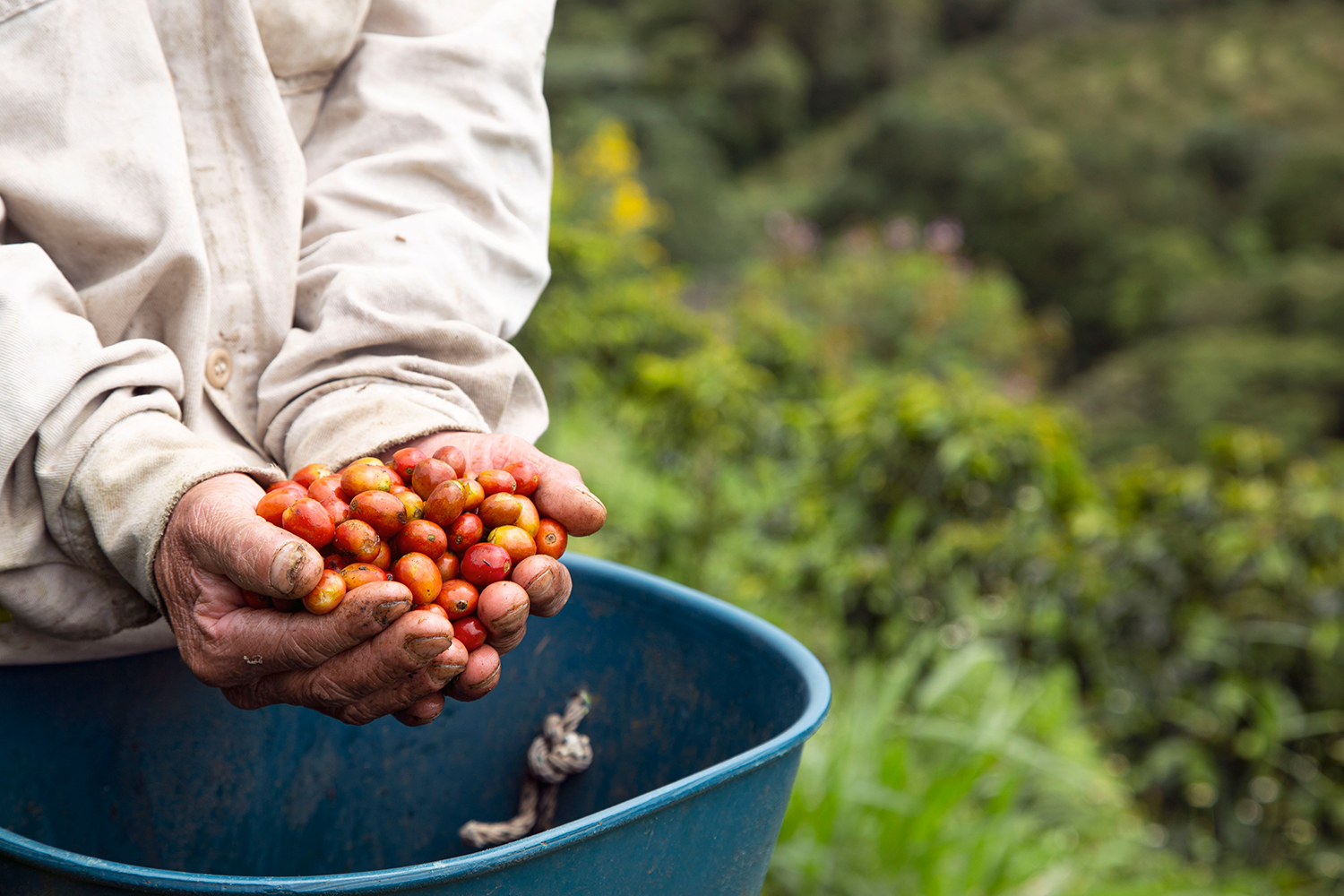
An old teacher of mine used to like to say: “Change is happening all the time; we just don’t tend to notice until it’s sufficiently rapid and dramatic.”
One area that has been rightly ripping, in particular relative to historical norms, has been the introduction, interest in, and acceptance of new coffee varieties. When Castillo was introduced many people wanted to turn their noses up at it. In our lab, we were more accepting, as the results on the cupping table were impossible to deny. We regularly found it to perform well against Caturra, Typica, and the many other varieties that we blinded it against. When it won the Cup of Excellence, people were somehow shocked, going so far as to disbelieve the results.
And then, seemingly overnight, Castillos were broadly accepted. What happened?
No longer cloaked Catimors, abhorrent hybrids, or frightening Frankensteins, the Castillos were reframed as improved varieties, new and even boutique hybrids. They were the future. Not only did they offer very good cups and numerous benefits to those who planted them, but the Castillos were also the vanguard. They were ushering in a new period of glory to rival the halcyon days of “heirloom” coffees that had grown tired with so much walking up the hill both ways. The halcyon days when 88s fell from trees like candy and a person could stab a bag at random for an easy 86 points. The halcyon days when you could still stab a bag. When the coffees were not only better but also somehow more resistant to shipping pressures, jute, and environmental infiltration. Those days were gone, and the coffee Titanomachy had arrived.
One day in November 2014, as in the beginning of so many stories, Lucho saw something. While his cryptozoology blog, associated slide deck, and exhaustive documentation are undeniably fascinating, this time, Lucho reported seeing not another dubious creature, but rather a peculiar coffee tree in Colombia laden with pink fruit. And this time, the sighting was confirmed by other people. There was more. Not only did this coffee come wrapped in pink cherries, but it also cupped well. Really well. Too well. Not Lance Armstrong too well, but still, it tasted super good to different people on different tables in different places at different roasts and at different times.
Lucho asked where it came from, was given a neighbor’s name, went there, found more plants, asked again, and was given another name. After a little sleuthing, he landed at a nearby farm, seemingly Farm Zero with the pink cherried plant, which, like others in the area, also grew standard Bourbon. As these mysterious trees were tall, scraggly, and growing amongst Bourbon, not exactly common in Colombia, the producer understandably called this coffee “Pink Bourbon.” Before long, the entire coffee industry did, too. This wasn’t some new-fangled hybrid. No. This was thought to be a rare and spontaneous cross (or mutation, depending on who you ask) of two (or one) titans of the heirloom variety pantheon, Red and Yellow Bourbon. Just as Gaia intended.
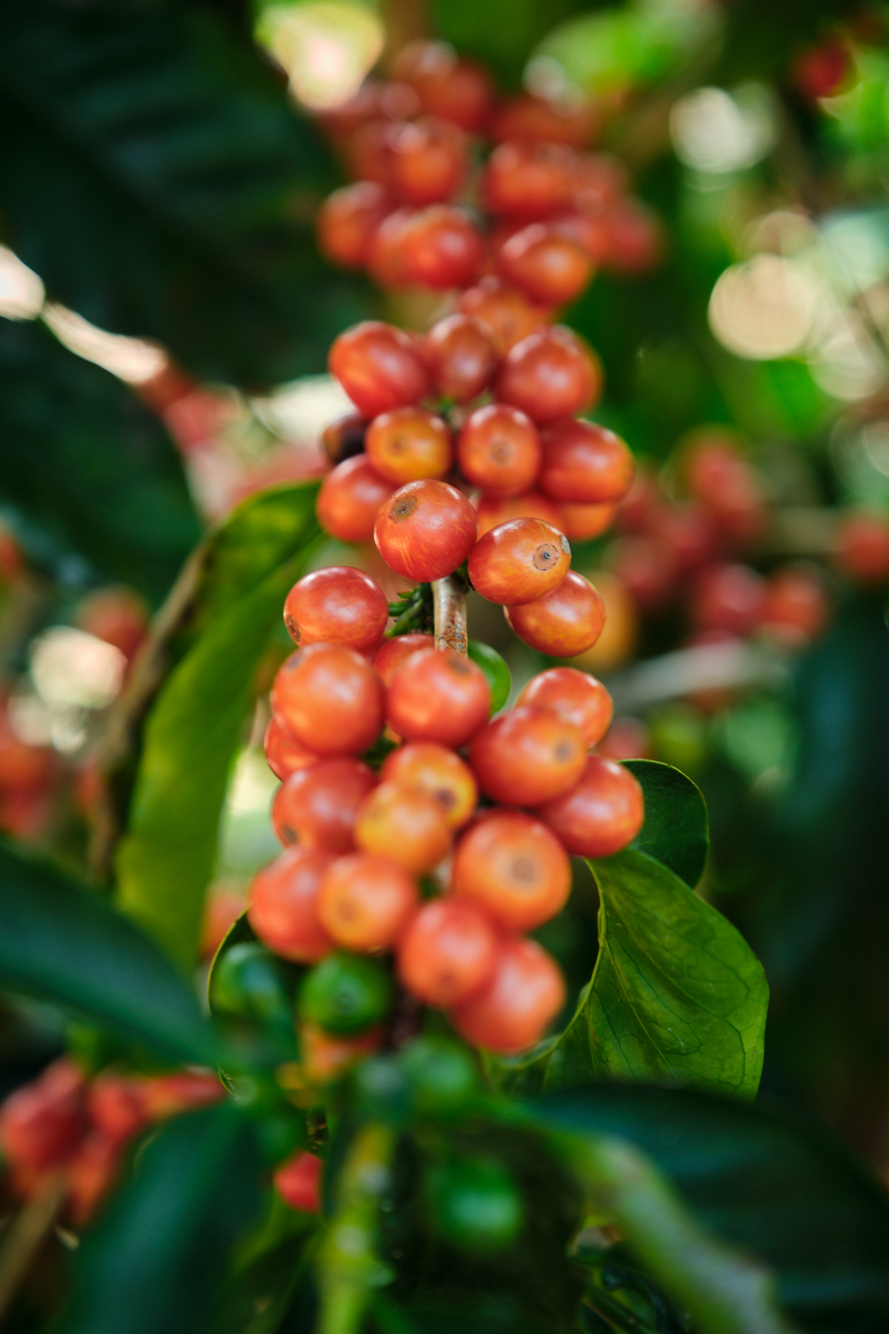
This coffee Cronus appeared poised to double cross the big brains with a doubling down of Bourbon blood that even a Habsburg would brew. But it was not to be. We have recently verified that this was not a heavens-toppling Cronus coffee – not a brother-cousin Bourbon. These were grains Gavroche, older than any royal house and yet newly recruited to the front lines of a battle to which they simultaneously did and did not belong.
Genetic testing revealed that Pink Bourbon was just a name. Pink Bourbon, as tested by us on two occasions (2017 by DNA Analytica and 2023 by RD2 Vision), was not a Bourbon at all, let alone a rare cross or mutation of one or more Bourbons. Nor was it a nouveau hybride. TLDR: Pink Bourbon is an Ethiopian landrace variety.
Our first round of testing was of leaves taken from two morphologically different plants (a tall plant [PBT, see table below] and a short plant [PBS], both colloquially known as Pink Bourbon). The tall was the first spotted, and the short turned up at a neighbor’s. These “proved to be similar to wild plants coming from Ethiopia.”

As clear-cut as it may seem, we’re still wading in murky water here. “Similar” does not mean “is” and the degree of similarity left a bit to be desired.

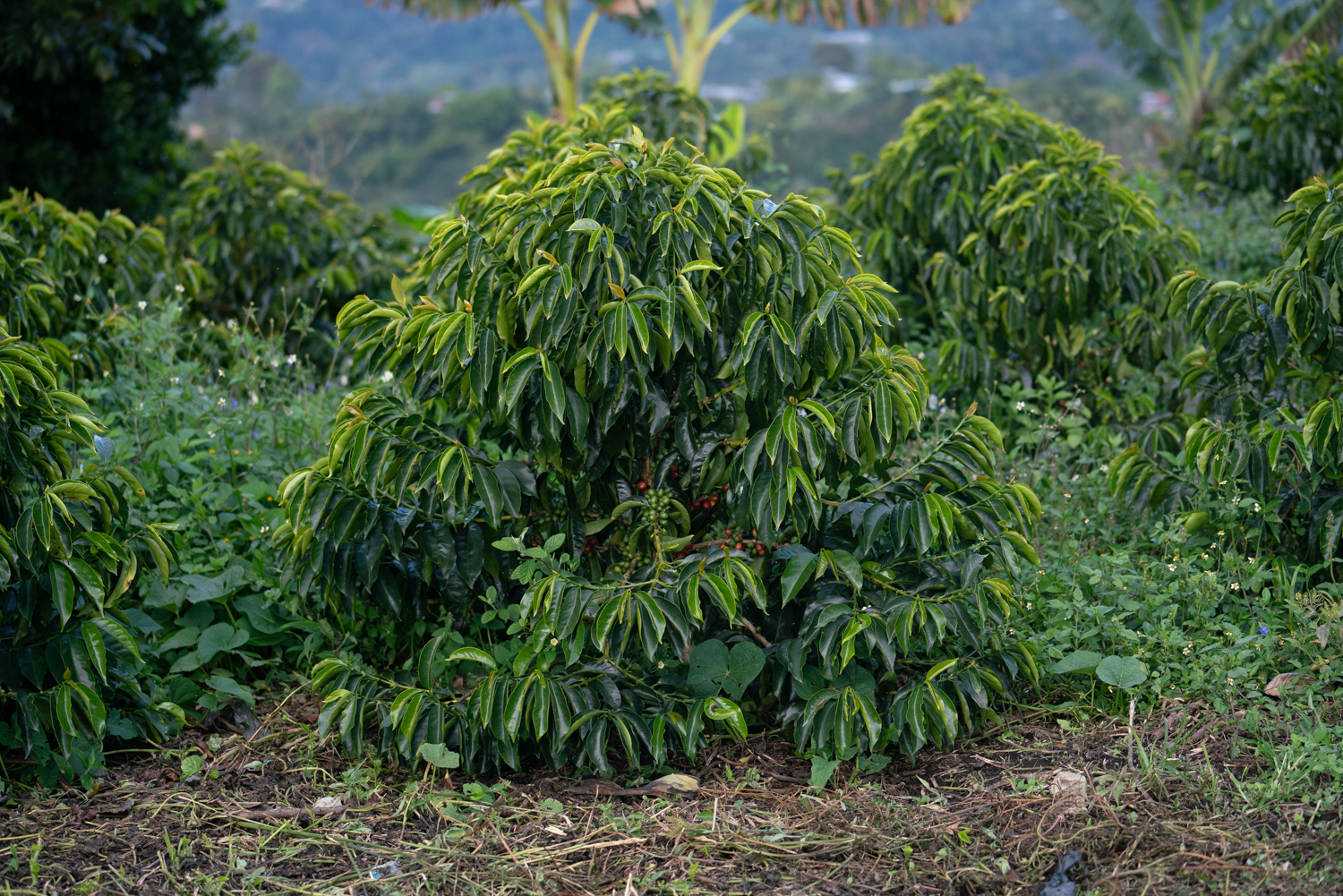
While the similarity lists for both of the “Pink Bourbons” in our initial tests were clearly dominated by Ethiopian coffee genetics, both also showed some similarity to Tanzanian Arabica (Mufindi), Bourbon, and Catimor. A snip of my Q&A with Giorgio from DNA Analytica, the 2017 testing lab may help:
Q: When looking at the percentage match results, how is that interpreted? If the SH sample is an 86% match for Ibrido Timor and also an 83.1% match for Mokha and again an 80.2% match for Caturra, is that to say that all these varieties are ultimately very similar to one another?
A: NO. It is possible that your plants share genes A; D; G; H; I with Mokha and A; B; G; H; W with Caturra.
Q: Is it more that the sample in question shares significant material with each, but in a novel way that does not necessarily suggest that the match coffees are similar?
A: YES
These were similar but not perfectly matched. Note that we have received 95% and even 100% similarity results in tests of other coffees. Hybrids that we tested with this method yielded similar-looking results to these Pink Bourbons, with the top match rendering in the very low 80% range. The tall/short morphology also seemed to support this similarity. Unfortunately, at that time, our focus was more on those other coffees, and the follow-up questions that I did not know to ask unsurprisingly did not get asked. Sometimes, answers give rise to more questions, even though those new questions may not actually come up until years later. In this case, those questions were not to be resolved for me until quite recently in talking with Christophe Montagnon of RD2 Vision.
It is important to note that these DNA tests can only return against the database that they’re compared to. The lower similarity rating, or the lack of a perfect match, can be as simple as not having a particular reference in your database. It could be that a plant has mixed genetics or the material submitted for testing (leaves or beans) came from more than one plant. Some of these possibilities can be ruled out by looking at the markers (an F1 result will be distinct from the results yielded by its two parents in a single test). Still, the bigger picture is that these tests, like so many others, require a sort of ground truth or validated data set to compare to. As it turns out and will become clear, report design can also significantly color interpretation and comprehension.
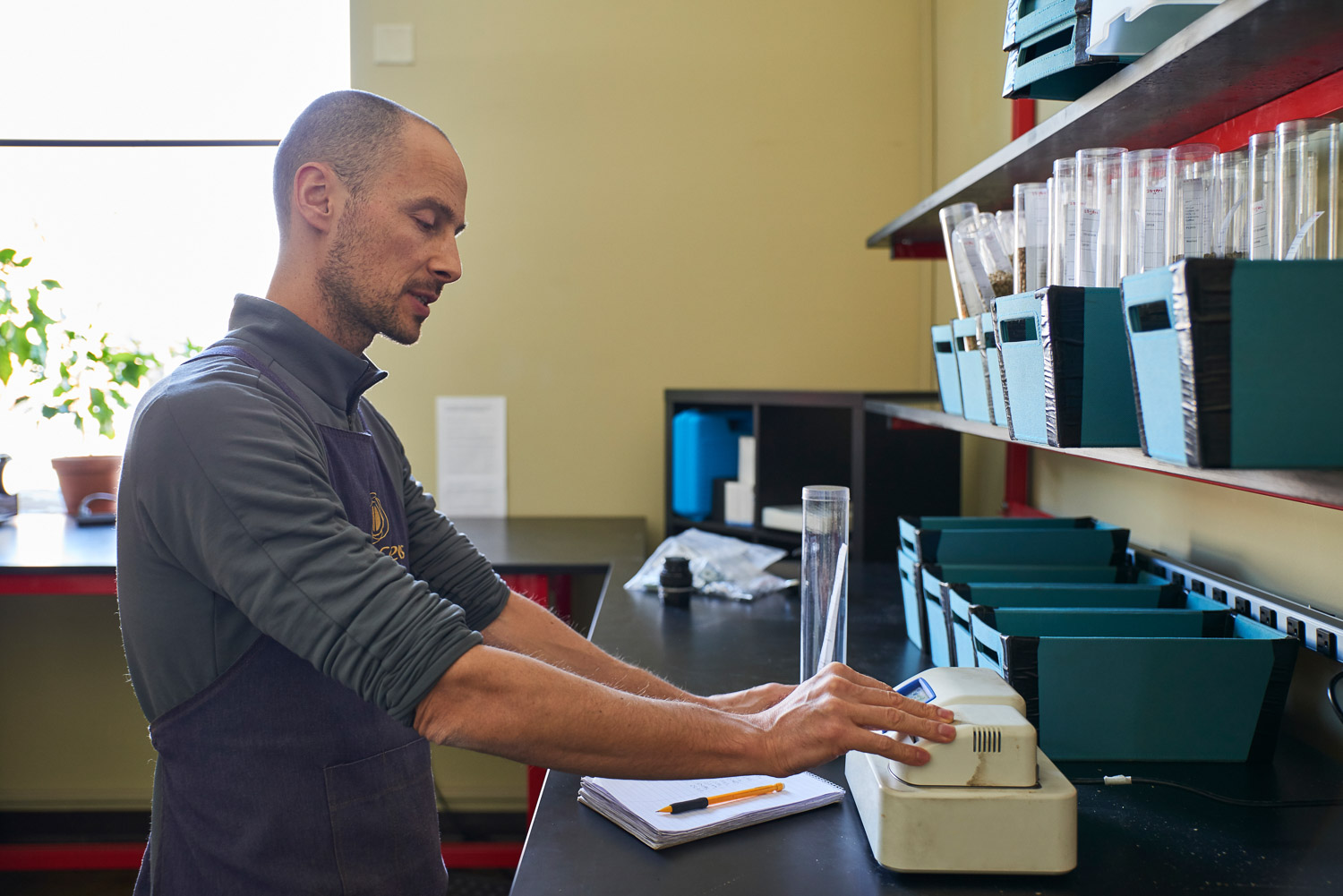
I reached out to Christophe from RD2 Vision in August of 2023 when the idea was presented for me to revisit the Pink Bourbon question and write this post. Before coming out and talking about how Pink Bourbon wasn’t a Bourbon, it seemed wise for me to have the testing done again. Years had passed, and presumably, the technology and certainly the databases had improved. Perhaps I had made a mistake the first time, or misunderstood the original report and my correspondence with its creator. Perhaps the bean shape and size morphology, and cup characteristics had actually mutated, along with the fruit color. Maybe it was, in fact, a mutated Bourbon with pink cherries and Ethiopian-like beans.
I selected five samples. Four of “Pink Bourbon” and one “Orange Bourbon” from five different producers in different regions from Colombia and Costa Rica, and sent them to RD2 Vision for testing.
When Christophe returned the results to me, they came with this note:
“All five are containing Pink Bourbon, which has nothing to do with Bourbon, as it is an Ethiopian landrace. People would say it is a mutation of Bourbon; it could not be further away from truth.”
Pretty clear, I would say.
Christophe noted that of my five samples, one was pure “Pink Bourbon”, two were mixed with Bourbon (the true Bourbon), and two were mixed with Catimor.
I still had some old questions lingering from 2017 about how to understand these results. Here again, we had what looked like imperfect matches, along with one perfect one. Further questions were raised by some of the results being “mixed” with Bourbon and Catimor. I emailed Christophe, who graciously offered to take a call and help me understand what I was looking at.
The conversation (lesson) was eye-opening, and focussed largely on this table:


This table shows the markers and alleles for the five samples I sent. There are a finite number of possible alleles for each marker and, by extension, a finite number of combinations of alleles and markers. Different combinations indicate different varieties. Here we start to get some insight into the percent similarity numbers that were originally presented by DNA Analytica.
I asked about the mixed returns. Could it be that the mixed returns were the actual “Pink Bourbon” and that the “pure Pink Bourbon” was actually a reversion? Approaching the same inquiry from a different direction: Would Castillo or Starmaya returns look similar to these, and could “Pink Bourbon” be a new hybrid?
As it turns out, these were rich questions. Christophe told me that the difference between what he had labeled “Bourbon” and what I would expect to see from Colombia (the dwarf mutation Caturra) was miniscule saying that “the only difference is a single gene mutation out of some 30k+ coffee genes.” From the genetic perspective, they were nearly identical (could be distinguished, but would require an extensive study to validate the difference). The difference between the two (Bourbon and Caturra) could be much more easily resolved morphologically. That is, by looking at the plants. Caturra, of course, is a dwarf plant and makes much more sense as a player in this Colombian coffee saga. Similarly, the Catimor mixes were both considered very consistent with Castillo, which, along with V.Colombia, obviously makes a ton of sense in Colombian coffee. This highlights how closely related plants we consider quite distinct can actually be.
So while it may be difficult to distinguish Bourbon from Caturra or the composite variety Castillo from the larger Catimor family strictly by “reading the tape,” we would expect to see specific patterns or signatures, characteristic alleles that would differentiate an F1 hybrid from the mixed returns that we saw in our samples. Pink Bourbon is not a new hybrid. We might identify with a very high level of confidence that Pink Bourbon is an Ethiopian landrace and that it is distinct from other Ethiopian landraces like Gesha. Yet, we may still need to rely on morphology to tell the difference between Bourbon and Caturra, as the latter is literally a single mutation of the former. Some branches of the family tree are much, much closer to one another than others are (especially for varieties deriving from another through one single mutation).
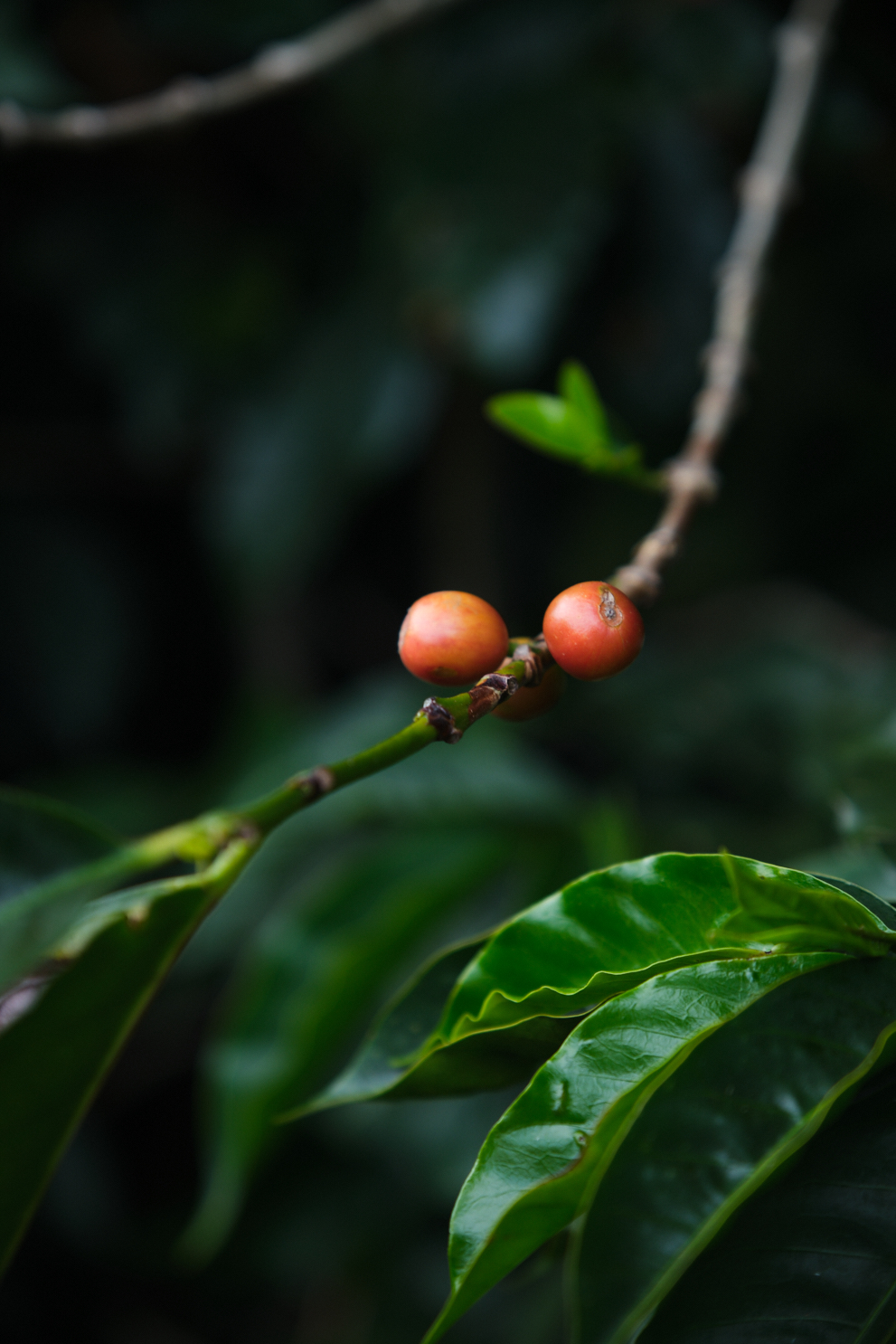
Each of our tests with RD2 relied on three beans from each sample. This means that at this level, we do not know if the mixed results were due to a mixture of pure beans (two 100% Pink Bourbon and one 100% Castillo), or if each of the three beans carried the markers of former crosses between the identified varieties. This would require more testing. What we do know is that in all cases, we identified Pink Bourbon in the samples (even the “Orange Bourbon” sample included the characteristic “Pink Bourbon” markers) and that Pink Bourbon is an Ethiopian Landrace coffee.
Confirming that Pink Bourbon was an Ethiopian landrace dovetailed with another important indicator that Pink Bourbon was not an F1 hybrid (as I had suspected). This indicator was that farmers had been collecting and sharing seeds successfully for years. From World Coffee Research:
“Seeds taken from F1 hybrid plants will not have the same characteristics as the parent plants. This is called “segregation.” It means that the child plant will not look or behave the same as the parent, with potential losses of yield, disease resistance, quality, or other agronomic performance traits.”
In retrospect, it all makes perfect sense. So, while we have seen some morphological differences (tall vs. short), the overall impact of nearly a decade of experience cupping the coffee and liberal sharing and successful planting of the seeds rules the F1 option out in support of Christophe’s conclusion.
We don’t know, but we can make an educated guess or two. I do not think that the Castillo group could be considered anything other than wildly successful at this point. Organizations around the world are hard at work to mimic, extend, and improve upon that success. Hybrid programs have been looking to the wild populations of Arabica still present in Ethiopia as a way to broaden cultivated Arabica’s genetic bottleneck (remember how close Bourbon and Caturra are, vs. Gesha and Pink Bourbon) while also drawing on coffees outside of the more traditional Robusta and HdT pools.
As such, we could find a clue to our Pink Bourbon mystery by looking at the examples of Casiopea, Evaluna, Mundo Maya, Naayarita, Starmaya, etc. Each of these coffees are hybrids that include genetics from Ethiopian stock. While Pink Bourbon is not a hybrid, it very well could have been brought to Colombia to be the parent of one, or as Christophe pointed out, “just to enrich the local pool of genetic resources.”
Another somewhat Occam explanation, if less likely due to scale, could be as simple as someone trying to bring in Gesha seed from Ethiopia and instead receiving what we now know as Pink Bourbon. Naming and identification are challenges all over the world.

This brings us to the last topic that Christophe and I discussed. Vernacular names. Is it ok that “Pink Bourbon” is not a Bourbon? In his email and report he called my samples “Pink Bourbon” and reiterated that they were not Bourbons. He discusses this topic in a paper detailing a similar phenomena (vernacular naming) in Yemen. Many of us have probably observed this in our own travels, and of course, it’s in no way unique to coffee. From peanuts to fireflies to strawberries, language and naming conventions are a funhouse full of distorted mirrors.
It’s not so bad. While we go on about the name and the origin of Pink Bourbon, and while we may be disappointed that it isn’t what we may have thought that it was and wasn’t what we might have thought it is, it’s important not to get too turned around in the funhouse. A coffee by any other name would taste as sweet, and Pink Bourbon regularly presents with fantastic, table-topping, and show-stopping cups.
There is… one more thing – a thorn in all this mud. I asked if there was a “real” Pink Bourbon that was, you know, a true Bourbon with a pink color mutation. Christophe said that there was not, at least not that he’d seen. I had hoped to avoid the Sendak-Seussian world of Lucho’s cryptozoology blog altogether, but in a weird way, it seems like we may have just planted it with coffee trees.